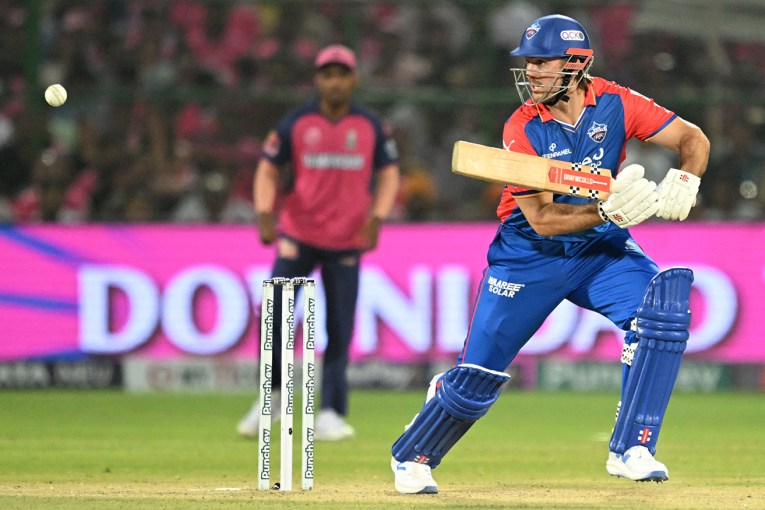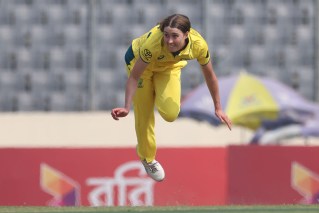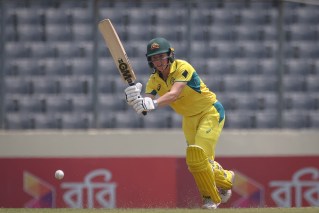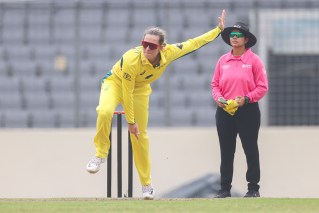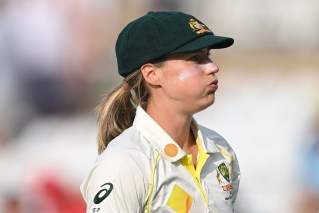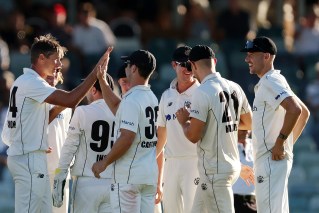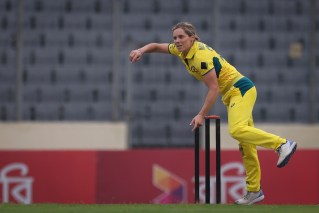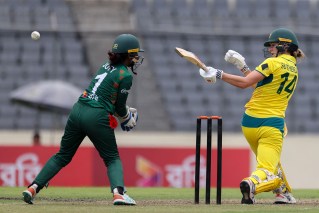Love or hate him, Clarke was a heroic skipper
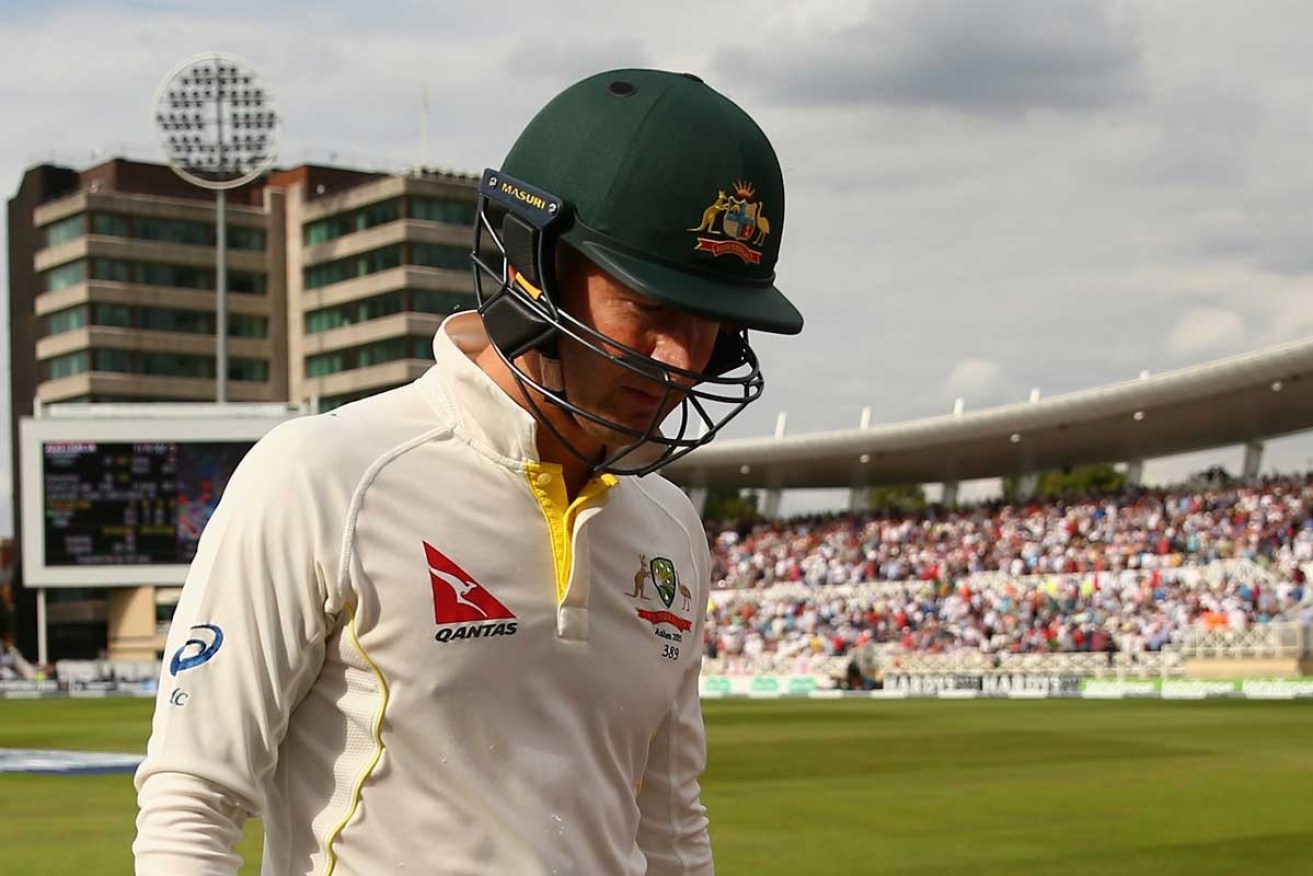
Michael Clarke has earned a place alongside his immediate predecessors as Australia’s captain and best batsman – Ricky Ponting, Steve Waugh and Allan Border – in the pantheon of all-time greats.
Clarke scored 28 Test hundreds – one more than Border, from 68 fewer Test innings – and, like all the greats, he made gargantuan tons when Test matches and series were on the line.
Of his 28 Test hundreds, 25 were scored in live rubbers. Thirteen of his Test tons were scores of 140+ and 11 of those were compiled in live rubbers.
• Lawson: Australia must rebuild, on and off the field
• Clarke should be remembered for courage: Sutherland
• The Ashes are lost, Michael Clarke retires
The first and the last of those mammoth hundreds, scored more than nine years apart, epitomise Clarke’s batsmanship and character.

A young Pup scores a Test century on debut in Bangalore. Photo: Getty
The first was scored in October 2004 on his Test debut against India at the M Chinnaswamy Stadium in Bangalore.
The 23-year-old Clarke walked in at 4-149 in the first innings of a four-Test series, as one of the greatest teams that Australia’s ever produced sought to conquer their final frontier – a Test series victory in India, a feat no Australian team had accomplished in 35 years.
He was faced with Anil Kumble, Harbhajan Singh and Zaheer Khan. On a pitch that Wisden described as “crazy-paving” and “crack[ed]” even at the toss, he used his feet fearlessly to the spinners – a skill that would become one of his trademarks – and even danced down the track to straight-drive the great Kumble for a towering six.
His successive partnerships of 107 and 167 with Simon Katich and Adam Gilchrist turned the match in Australia’s favour.
By the time he was dismissed after lunch on the second day, Clarke had scored 151 invaluable runs that set Australia up to win the Test (by 217 runs) and the series (2-1).
The last of Clarke’s big live-rubber tons was scored just 17 months ago at Newlands in the final match of a three-Test series against the world No.1-ranked South Africans.
Heading into the Test, Clarke was dogged by whispers that – two months shy of his 33rd birthday and without a score all series – he could no longer play the short ball.

An old Pup survived some torrid bowling from Morne Morkel to lead Australia to victory against the world’s No.1 side. Photo: Getty
Thus, when he strode out to bat in the shadow of Table Mountain after lunch on the first day, with the series evenly poised at 1-1, South Africa’s four-pronged pace attack of Dale Steyn, Morne Morkel, Vernon Philander and Kyle Abbott decided to empirically test that theory.
The 6 foot 5 inch Morkel went around the wicket and attacked Clarke with a barrage of bouncers, striking him on just about every conceivable part of his upper body, including his head (twice).
Much like Steve Waugh before him, Clarke handled the ferocious bodily assault by the simple, effective – but painful – method of getting in behind the ball and letting it hit him. He survived and went on to score an unbeaten 161.
His team won the Test to clinch the series 2-1 and cap off a summer as golden as any in Australia’s rich cricketing history.
At the press conference after the second day’s play, he acknowledged that Morkel’s spell was “a bit difficult” – a strong early contender for the understatement of the 21st century – and thanked the Australian team’s physiotherapist and doctor for keeping him on the park, but politely declined to detail any specific injuries that he may have suffered.
A few weeks later, it was discovered, via a routine scan upon his return to Australia, that he’d batted for most of his innings with a fractured left shoulder – which is the front, bowler-facing shoulder for a right-handed batsman like him.

Clarke’s relationship with Lara Bingle meant he went from the cover of Inside Cricket to the cover of Woman’s Day. Photo: Getty
The Australian team doctor said such was the pain that Clarke was in after Morkel’s spell on day one, he “didn’t sleep at all” that night, before returning the next day to notch up his 27th Test hundred and steer Australia from 3-331 to a match-winning 7-494 declared.
Yet, as I wrote in the immediate wake of his Cape Town heroics: “Clarke has not been, and in all likelihood never will be, truly embraced by the public in the same fashion that his immediate predecessors – Ricky Ponting, Steve Waugh, Mark Taylor and Allan Border – were. That unfortunate state of affairs is in no way Clarke’s fault”.
In substance, Clarke has always upheld the finest of Australian cricket’s traditional virtues – an attacking batsman of humble, working-class origins who scores big runs when his team most needs them; and an enterprising captain who is willing to risk losing Test matches in order to win them.
Off the field, he “gives generously and quietly to charity, never misses his junior cricket club’s breakfast, and is renowned for his generosity and loyalty towards his family and friends“.
But, instead of acknowledging the runs scored, Test matches won or bruises worn in service of his country, a certain section of the Australian public remains unhealthily fixated on Clarke’s purely cosmetic traits.
See, for example, the tattoos, the underwear commercials, the BMW convertible, and the past relationship with Lara Bingle.
During the losing home Ashes summer of 2010-11, Clarke was booed to the crease when he walked out to bat in the Sydney Ashes Test.
Mike Hussey made a point of highlighting the incident in his autobiography and described the spectators’ behaviour as “really ordinary”.
Hopefully, with the passage of time, Clarke will be remembered fairly as the captain who inherited a side that had just been demolished 3-1 in a home Ashes series and crashed out of the 2011 World Cup at the quarter-final stage, and, in the space of three-and-a-half years, dragged them back to the summit of world cricket — a record fifth World Cup victory and just the third Ashes whitewash in history — through his runs, leadership and sheer force of will.
